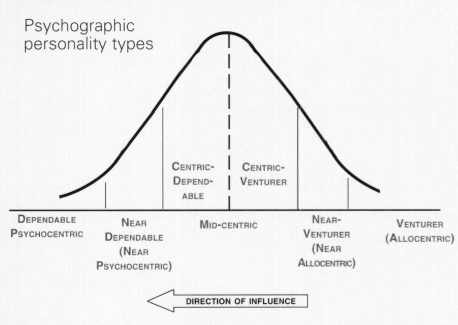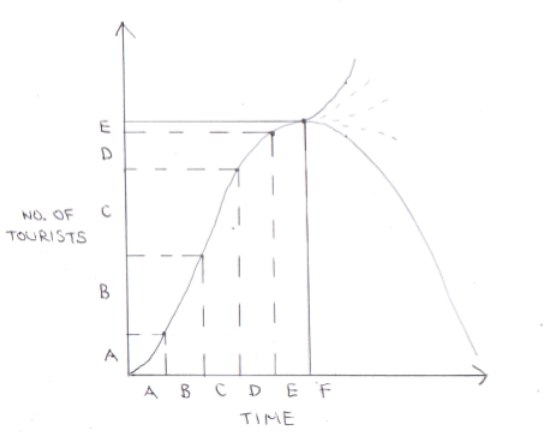| An Introduction To Tourism |
|
DESTINATION CHANGE CONSEQUENCES
Developing a community-based approach to tourism planning
To ensure continued community satisfaction, they must have influence and a level of control over tourism development and the planning process (Munhurrun & Naidoo, 2011). The benefits and costs of tourism development should also be discussed with them by the local government. This is not a market-driven process, as the community must be focused on before the actual development. The local government is responsible for ensuring this community-based approach is met, as they are entitled to involve, consult and do the best for their constitutes.
Community involvement requires looking for collaboration and participation from all areas of community, despite their differing attitudes and views and is integral to reaching a sustainable approach to tourism.
Community involvement requires looking for collaboration and participation from all areas of community, despite their differing attitudes and views and is integral to reaching a sustainable approach to tourism.
Diversity of stakeholders and perspectives of tourism
A stakeholder is any group or individual which can affect or is affected by an organisation (Freeman, 1983). Each stakeholder group has different agendas and attitudes towards tourism and its development in the related destination. Thus research and planning must be implemented in order to satisfy the differing demands of all different stakeholder groups, if it plans on being sustainable.
Different stakeholders in a heterogenous community:
- government
- environmentalists
- community members
- tourism businesses
- groups who lack interest in or awareness of tourism
These different stakeholder groups are distinguished by:
- their reliance on tourism
- their interest in tourism
- their perspective on tourism (positive or negative)
- their view on development
- level of power
- their influence on tourism
Mendelow's (1991, as cited in Gupta, 1995) following matrix was developed to display the relative power and interest that each stakeholder group has.
Different stakeholders in a heterogenous community:
- government
- environmentalists
- community members
- tourism businesses
- groups who lack interest in or awareness of tourism
These different stakeholder groups are distinguished by:
- their reliance on tourism
- their interest in tourism
- their perspective on tourism (positive or negative)
- their view on development
- level of power
- their influence on tourism
Mendelow's (1991, as cited in Gupta, 1995) following matrix was developed to display the relative power and interest that each stakeholder group has.
Destination responses to tourism
Butler's (1980) TALC as shown below can be overlaid with Plog's (2001) model of venturers versus dependables, also shown below. Each of Butler's (1980) stages of destination change corresponds with one or more of Plog's different tourist types.
Model showing Butler's (1980) TALC overlaid with Plog's (2001) concept
Table 12 shows the stages of Butler's (1980) TALC, Plog's (2001) tourist types and subsequent destination responses to tourism. These will be displayed by the destination stage, the type of tourist and the destination responses. This was derived from reviewing credible literature.
Table 12: Destination responses to tourism.
Sources: Butler (1980); Plog (2001).
Key points of the table:
- Butler's (1980) model and Plog's (2001) concept can be overlaid to determine community responses to destination changes.
- level of community irritation increases as the destination moves through Butler's (1980) stages and subsequently Plog's (2001) tourists move from venturer to more dependable.
The Irritation Index (Doxey, 1975) was also developed to measure community responses to a destination's lifecycle. This can also be overlaid with Butler's (1980) model to determine community irritation at specific destination stages.
Table 13 shows Doxey's (1975) Irritation Index. These will be displayed by the level of irritation, destination responses to tourism and the likely stage (Butler, 1980) it occurs in. This was derived from reviewing credible literature.
Table 13: Irritation Index.
Key points of the table:
- Butler's (1980) model and Plog's (2001) concept can be overlaid to determine community responses to destination changes.
- level of community irritation increases as the destination moves through Butler's (1980) stages and subsequently Plog's (2001) tourists move from venturer to more dependable.
The Irritation Index (Doxey, 1975) was also developed to measure community responses to a destination's lifecycle. This can also be overlaid with Butler's (1980) model to determine community irritation at specific destination stages.
Table 13 shows Doxey's (1975) Irritation Index. These will be displayed by the level of irritation, destination responses to tourism and the likely stage (Butler, 1980) it occurs in. This was derived from reviewing credible literature.
Table 13: Irritation Index.
Sources: Doxey (1975); Butler (1980).
Key points of the table:
- Doxey's (1975) Irritation Index can be overlaid with Butler's (1980) model.
- community irritation increases as tourist numbers rise, external influences increase and the destination moves through Butler's (1980) stages.
Key points of the table:
- Doxey's (1975) Irritation Index can be overlaid with Butler's (1980) model.
- community irritation increases as tourist numbers rise, external influences increase and the destination moves through Butler's (1980) stages.






